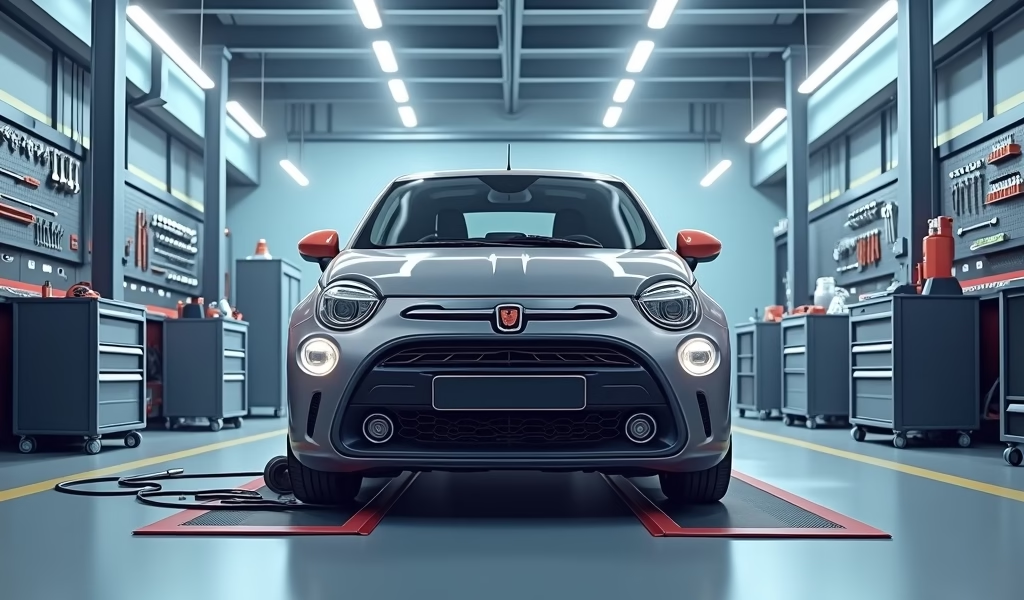Overview
This article explains how proper car maintenance directly impacts insurance costs for new drivers, with specific maintenance routines, documentation practices, and driving habits that can lower premiums. By mastering essential car checks, keeping maintenance records, adopting safe driving techniques, and preparing vehicles for seasonal challenges, new drivers can demonstrate responsibility to insurers while preventing accidents and breakdowns.
# Insurance for New Drivers: Car Care Tips That Save Money and Stress
Table of Contents
- Understanding the Connection Between Car Care and Insurance
- Insurance Basics Every New Driver Should Know
- Why Regular Maintenance Matters to Your Insurer
- Essential Car Checks Every New Driver Should Master
- Keeping Good Records: The Secret Insurance Weapon
- Driving Habits That Lower Your Premium
- Smart Tech for Safer Driving and Lower Rates
- Seasonal Car Care for Insurance Protection
- Conclusion
- Frequently Asked Questions
Understanding the Connection Between Car Care and Insurance
When you’re new to driving, insurance for new drivers can seem like just another expense to worry about. But here’s something many newcomers don’t realize: how you care for your vehicle directly impacts what you’ll pay to insure it. As a mechanic who’s seen thousands of cars over the years, I can tell you that well-maintained vehicles aren’t just safer and more reliable—they can also help keep your insurance premiums manageable.
Think about it this way: insurance companies calculate risk. A properly maintained car is less likely to break down, cause an accident, or need expensive repairs. That reduced risk can translate to more affordable insurance rates for first-time drivers who might otherwise face steep premiums due to their limited driving history.
Throughout my career, I’ve helped countless new drivers understand how simple maintenance routines not only extend their car’s life but also protect their wallets from unnecessary insurance hikes. Let’s explore how you can be smart about both car care and insurance from day one behind the wheel.
Insurance Basics Every New Driver Should Know
Before we dive into maintenance, let’s clarify what you’re actually paying for when you purchase insurance. At its core, auto insurance is protection against financial loss. Different coverage types address different risks:
- Liability coverage: Pays for damage you cause to others
- Collision coverage: Covers damage to your vehicle from accidents
- Comprehensive coverage: Handles non-collision damage like theft, vandalism, or weather events
- Personal injury protection: Covers medical expenses regardless of fault
- Uninsured/underinsured motorist coverage: Protects you if someone without adequate insurance hits you
As a new driver, you might be tempted to go with minimum coverage to save money. Having worked with many young drivers dealing with the aftermath of accidents, I strongly advise against this approach. Instead, look for affordable insurance options for new drivers that don’t sacrifice critical protection.
Insurance companies determine your premium based on several factors: your age, driving history (or lack thereof), where you live, and—importantly—the condition and type of your vehicle. Many insurers offer discounts for safety features, anti-theft devices, and evidence of responsible car ownership. This is where consistent maintenance creates a direct link to your insurance costs.

Why Regular Maintenance Matters to Your Insurer
In my 20+ years working under the hood, I’ve seen how neglected maintenance leads to avoidable accidents. That cracked wiper blade seems minor until it fails during a rainstorm and contributes to a collision. Those worn brake pads might seem fine for “just a little longer,” until they don’t stop you in time.
Insurance companies know these patterns well. While they may not explicitly check your maintenance records when you first sign up, the effects of poor maintenance eventually surface in claims data. Moreover, if you’re involved in an accident where maintenance neglect is determined to be a factor, your insurer might even deny coverage.
According to a study by the Insurance Information Institute, vehicle malfunction contributes to thousands of accidents annually. Many of these malfunctions could have been prevented with regular maintenance. This data influences how insurers calculate risk pools, affecting premiums across the board.
Some insurance companies now offer usage-based programs that monitor not just your driving habits but also can detect signs of poor vehicle maintenance. For new drivers trying to establish a good insurance history, these programs provide an opportunity to demonstrate responsibility both behind the wheel and in vehicle care.
Essential Car Checks Every New Driver Should Master
You don’t need to become a professional mechanic to maintain your car properly. However, learning these basic checks will save you money and potentially prevent accidents that could raise your insurance premiums.
Monthly Checks You Can Do Yourself
- Tire pressure and tread depth: Underinflated tires increase fuel consumption and risk of blowouts. Use a simple pressure gauge and the penny test for tread depth.
- All lights functioning: Have someone help you check that headlights, brake lights, turn signals, and reverse lights work properly.
- Fluid levels: Learn to check your oil, coolant, brake fluid, power steering fluid, and windshield washer fluid.
- Windshield wipers: Replace them when they start streaking—typically every 6-12 months.
- Battery terminals: Look for corrosion (white, powdery substance) and clean with a wire brush if needed.
I’ve seen $10 wiper blades prevent accidents that would have raised insurance premiums by hundreds of dollars. These simple checks take minutes but pay enormous dividends in safety and savings.
Seasonal Maintenance Schedule
Beyond monthly checks, establish a seasonal maintenance routine:
- Spring: Check air conditioning, inspect suspension components, and replace cabin air filter.
- Summer: Test battery (heat is hard on batteries), check cooling system, and verify brake condition before vacation travel.
- Fall: Check heater operation, inspect tires for winter readiness, and test all lights as days get shorter.
- Winter: Test antifreeze strength, install winter wiper blades, and keep gas tank at least half full to prevent fuel line freezing.
When searching for the best insurance for new drivers, ask about discounts for completing defensive driving courses that include basic maintenance education. Many insurers recognize that knowledgeable drivers are safer drivers.
Keeping Good Records: The Secret Insurance Weapon
One piece of advice I give to every new driver: document everything. In my years helping customers with insurance claims, I’ve seen how proper documentation can make the difference between a claim being approved or denied.
Start a simple maintenance log—either a physical notebook in your glove compartment or a digital app. Record every:
- Oil change with date, mileage, and where it was performed
- Tire rotation, balance, or replacement
- Brake service or replacement
- Battery replacement
- Major service intervals (30K, 60K, 90K miles)
- Repairs, however minor
- Dates when you performed your own maintenance checks
Keep all receipts, either physically or as digital scans. Many insurance companies now accept digital documentation through their apps, making record-keeping easier than ever. These records serve multiple purposes:
- Proof of responsible ownership if your rates are ever reviewed
- Evidence against claims that an accident was caused by negligence
- Documentation for warranty purposes
- Value preservation when you eventually sell the vehicle
Additionally, take date-stamped photos of your vehicle periodically, especially after any repairs. This creates a visual history that can be invaluable if you need to file a claim for damage. According to the National Association of Insurance Commissioners, proper documentation is one of the most effective ways to ensure smooth claims processing.

Driving Habits That Lower Your Premium
The way you drive affects both your vehicle’s condition and your insurance rates. In my experience, the drivers who take care of their cars also tend to drive them more carefully—it’s all part of the same responsible ownership mindset.
Develop these habits to reduce wear and tear while potentially qualifying for insurance discounts:
- Smooth acceleration and braking: Aggressive driving wears out brakes, transmissions, and engines prematurely. Gradual acceleration and deceleration save fuel and components.
- Proper speed maintenance: Constantly speeding not only risks tickets (which dramatically increase premiums) but also increases wear on your vehicle’s systems.
- Regular route planning: Avoiding congested areas reduces stop-and-go driving that’s harsh on your vehicle. Some insurance apps now reward efficient route planning.
- Minimal idle time: Modern engines don’t need extensive warm-up. Excessive idling wastes fuel and contributes to carbon buildup.
- Appropriate cargo loading: Overloading strains suspensions, brakes, and tires. Distribute weight evenly and within manufacturer specifications.
Many insurers now offer telematics programs—devices or apps that monitor driving habits. For new drivers with no established history, these programs provide concrete evidence of safe driving habits, potentially resulting in substantial discounts. Some programs can reduce premiums by up to 30% for consistently safe driving.
Remember that insurance companies are increasingly sophisticated in connecting driving habits to maintenance needs. Hard braking not only indicates potentially risky driving but also accelerates wear on braking components. By adopting smooth driving techniques, you’re simultaneously protecting your vehicle, reducing maintenance costs, and potentially lowering your insurance premiums.
Smart Tech for Safer Driving and Lower Rates
Technology can be your ally in both maintaining your vehicle and securing better insurance rates. Many of my younger clients are surprised to learn how tech tools can make car ownership easier and more affordable.
Consider implementing these tech solutions:
- OBD-II scanner apps: Connect to your car’s computer system through inexpensive Bluetooth adapters to monitor engine health and decode warning lights before they become major issues.
- Maintenance reminder apps: Set personalized maintenance schedules based on your specific vehicle and driving conditions.
- Dash cams: These can provide crucial evidence in accident claims, protecting you from fault in no-fault situations.
- Tire pressure monitoring systems: Aftermarket systems can alert you to dangerous pressure changes before they lead to blowouts or excessive wear.
- Insurance telematics apps: These monitor driving habits and can lead to significant discounts for safe driving patterns.
Many insurance companies offer specific discounts for vehicles equipped with advanced safety technology. Features like automatic emergency braking, lane departure warning, and blind-spot monitoring not only make driving safer but can also translate to premium reductions.
When shopping for insurance as a new driver, specifically ask about technology discounts. Some companies offer up to 10% off for vehicles with advanced driver assistance systems (ADAS). If you’re in the market for a new vehicle, consider these features not just for safety but as long-term insurance savings.
Seasonal Car Care for Insurance Protection
Different seasons present unique challenges to your vehicle, and preparing for these changes is an essential part of responsible car ownership that insurers notice. I’ve seen countless preventable accidents that occurred simply because drivers didn’t adjust to seasonal conditions.
Winter Preparation
Winter is particularly hard on vehicles and statistically sees higher accident rates:
- Install appropriate winter tires if you live in snowy regions—many insurance companies offer specific discounts for this safety measure.
- Check battery strength—cold temperatures reduce battery capacity when you need it most.
- Verify antifreeze protection to at least -30°F to prevent costly engine block damage.
- Keep emergency supplies in your vehicle: blanket, flashlight, ice scraper, and small shovel.
Spring Maintenance
After winter’s harsh conditions:
- Check for pothole damage to suspension components and alignment.
- Wash thoroughly, including undercarriage, to remove corrosive road salt.
- Replace wiper blades that may have been damaged by ice and snow.
- Inspect for any leaks that may have developed during freeze-thaw cycles.
Summer Readiness
Heat brings its own challenges:
- Ensure cooling system is in perfect condition—overheating is the number one cause of summer breakdowns.
- Check A/C performance before hot weather hits.
- Verify tire pressure frequently, as heat increases pressure and risk of blowouts.
- Test battery—heat accelerates battery deterioration.
Fall Checkup
Preparing for changing conditions:
- Check all lights as days get shorter.
- Test heater and defroster before cold weather arrives.
- Replace wiper blades and fill washer fluid for improved visibility during fall rains.
- Inspect tires for adequate tread for wet conditions.
By following a seasonal maintenance schedule, you demonstrate to insurers that you’re a responsible vehicle owner who adapts to changing conditions. Some insurance companies offer specific safety equipment discounts that apply to seasonal preparations like winter tires or emergency kits.
Conclusion
As a mechanic who’s witnessed the direct relationship between vehicle maintenance and insurance claims for decades, I can confidently say that the care you give your car directly impacts your financial well-being as a driver. For new drivers especially, establishing good maintenance habits from the beginning creates a foundation for lower insurance costs throughout your driving life.
The connection is clear: well-maintained vehicles are less likely to cause accidents, break down unexpectedly, or require expensive repairs. Insurance companies recognize this and increasingly reward responsible ownership. By following the guidance in this article—from basic maintenance checks to seasonal preparations—you’re not just extending your vehicle’s life; you’re positioning yourself as a lower-risk customer deserving of better rates.
Remember that insurance for new drivers doesn’t have to break the bank. By combining smart maintenance practices with appropriate coverage selections and available discounts, you can protect both your vehicle and your finances. Start building your maintenance records today, develop those good driving habits, and watch how your responsible approach translates to insurance savings over time.
The road to affordable insurance begins in your driveway, with the simple act of caring for your vehicle. It’s an investment that pays dividends in safety, reliability, and ultimately, insurance savings that you’ll appreciate for years to come.
Frequently Asked Questions
How much should new drivers expect to pay for insurance?
New drivers typically pay 1.5 to 3 times more than experienced drivers. Rates vary significantly based on location, vehicle type, and coverage levels.
Can taking a defensive driving course lower my insurance premium?
Yes, most insurance companies offer discounts of 5-15% for completing approved defensive driving courses. These discounts often last for three years before renewal is required.
Does the type of car I drive significantly affect my insurance rates?
Absolutely—vehicles with high safety ratings and lower repair costs typically qualify for better rates. Sports cars and luxury vehicles generally cost substantially more to insure.
How long am I considered a “new driver” for insurance purposes?
Most insurance companies consider drivers “new” for the first 3-5 years of licensed driving. Your rates typically begin to decrease after maintaining a clean driving record for 1-2 years.
Will a single minor accident dramatically increase my insurance as a new driver?
Unfortunately, yes—new drivers may see increases of 20-50% after even a minor claim. Many companies offer accident forgiveness programs specifically for new drivers to help mitigate this issue.


Pingback: how much is insurance for a new driver?! - knowsyourcar.com